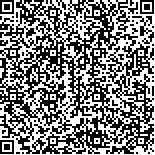下载中心
优秀审稿专家
优秀论文
相关链接
摘要

地表反照率(Albedo)是描述地表辐射能量平衡的重要参数,为了获得高分四号(GF-4)静止卫星的地表反照率产品,构建了一种基于核驱动双向反射率分布(BRDF)模型的反照率反演方法。首先,探索核驱动BRDF模型对GF-4卫星数据的适用性,加入地表分类信息,为核系数赋初值,并引入鲍威尔迭代算法优化模型结果。然后,对BRDF模型进行角度积分获得各个波段的地表窄波段反照率。在此基础上,结合GF-4卫星光谱响应函数与光谱库,首次建立了将窄波段反照率到宽波段反照率的转换系数,并反演得到0.4—0.7 μm和0.3—3.0 μm的宽波段反照率。最后,利用Landsat 8卫星数据和MODIS地表反照率产品对基于GF-4卫星数据的地表反照率反演结果进行交叉验证。Landsat 8与GF-4的反照率结果对比表明,GF-4卫星可见光范围内的反照率反演结果精度为85.6%,短波范围内的反照率反演结果精度为93.4%;MODIS与GF-4的反照率结果对比表明,可见光范围的地表反照率精度达到87.7%,短波范围的地表反照率精度达到85.9%。这说明GF-4卫星地表反照率反演结果具有较高精度,GF-4卫星反照率产品具有一定应用潜力。
关键词:
高分四号(GF-4) 高频次 反照率 BRDF 静止卫星Land surface albedo is an important surface parameter applied in surface energy balance. GF-4, which is the first geostationary orbit satellite that combines high spatial and temporal resolution in China, has great potential in obtaining regional albedo in the country.
The present geostationary orbit satellites are relatively low in spatial resolution, and the observation ranges of most cannot cover all land areas because their orbitals are deviated from China. Multi-frequency observation cannot be easily realized in the country. Therefore, to address the problemsof short time and low spatial resolution of albedo products in China and obtain the albedo images of geostationary orbit satellite data, an albedo inversion method based on kernel-driven bidirectional reflectance distribution (BRDF), taking GF-4 stationary satellite data as data source, is constructed.
Earth surface classification is integrated to provide an initial value to kernel factorsto explore the feasibility of semi-empirical kernel-driven BRDF model applied on GF-4 satellite data. Compared with the least squares fitting method, the Powell iterative optimization algorithm has better convergence effect and is thus used to optimize the result of the model. Then, the land surface narrowband albedos of each band can be gained through angle integration using the BRDF model. Therefore, narrowbandalbedo is converted into broadband for the GF-4 satellite data for the first time by using the Santa Barbara DISORT model and combining the spectral library with the spectral response function of the GF-4 satellite. Albedo inversion in visible (0.4-0.7 μm) and shortwave bands (0.3-3 μm) are acquired.
Finally, a cross-validation experiment using Landsat8 reflectivity and MODIS albedo productsis conducted. The albedo comparison results retrieved by Landsat8 and GF-4 data shows that the accuracy of albedo in the visible band retrieved by GF-4 data is 85.6%, and that in the shortwave band retrieved by GF-4 is 93.4%. The albedo comparison results retrieved by MODIS and GF-4 data shows that the accuracy of albedo in the visible band retrieved by GF-4 data is 87.7%, and that in shortwave band retrieved by GF-4 data is 85.9%. The experiment indicates that albedo retrieved by GF-4 data has high accuracy, and GF-4 satellite albedo products have considerable potential applications.
The algebraic inversion method that uses GF-4 satellite data successfully obtains high-resolution albedo imagesfrom a geosynchronous orbit satellite. If this method is further verified, then it can be used for the mass production of albedo products and address the problemsof short time and low spatial resolution. However, relevant verification work should be conducted due to the current lack of ground test data.

